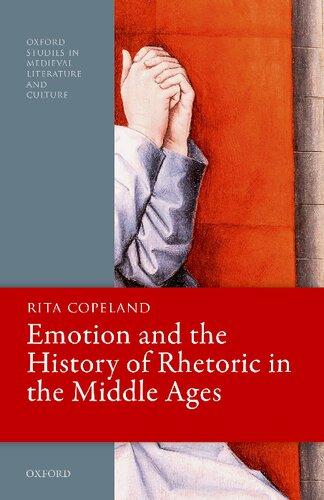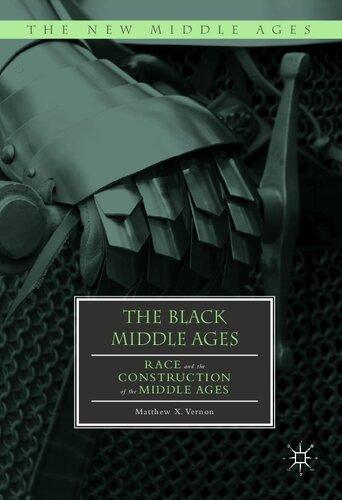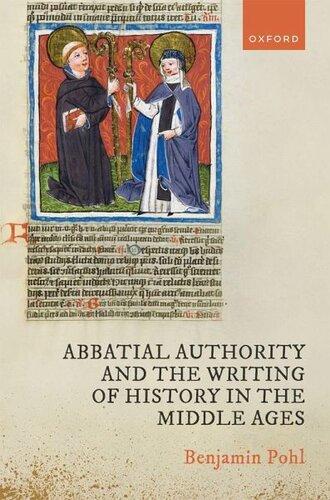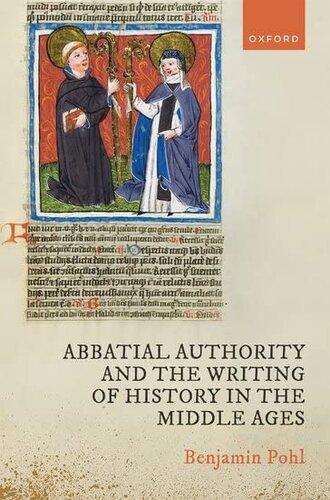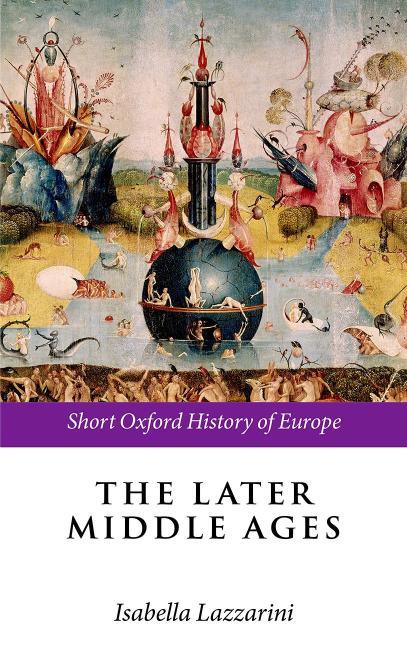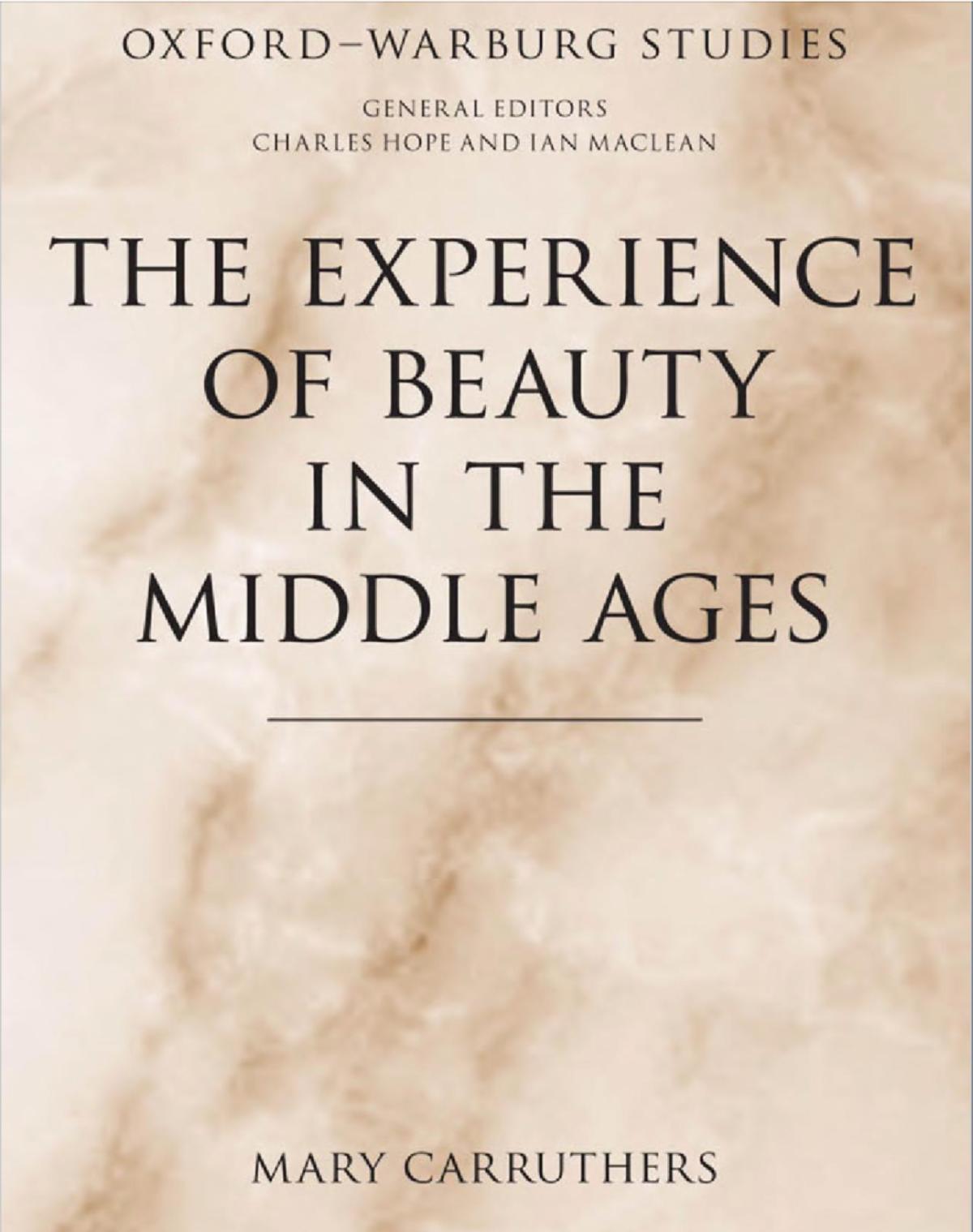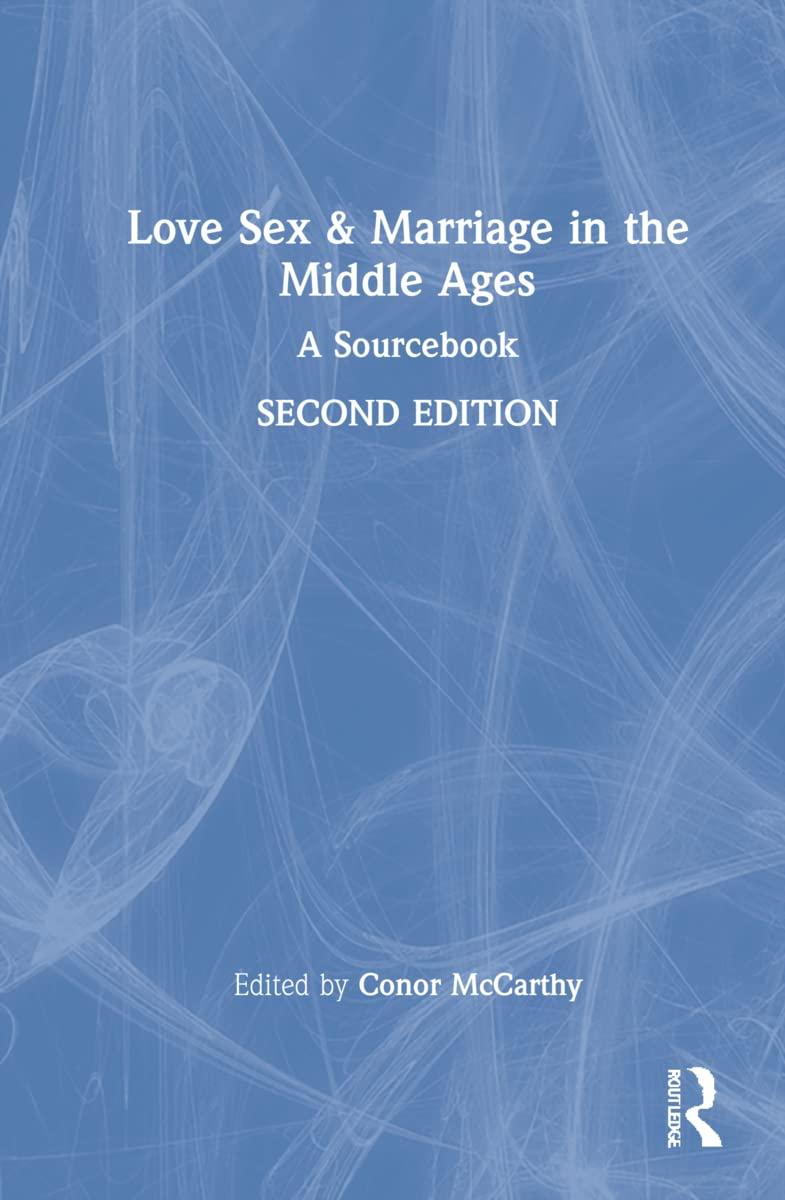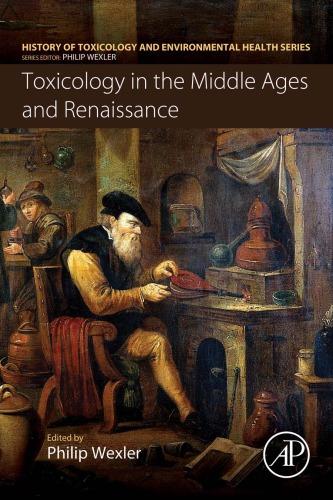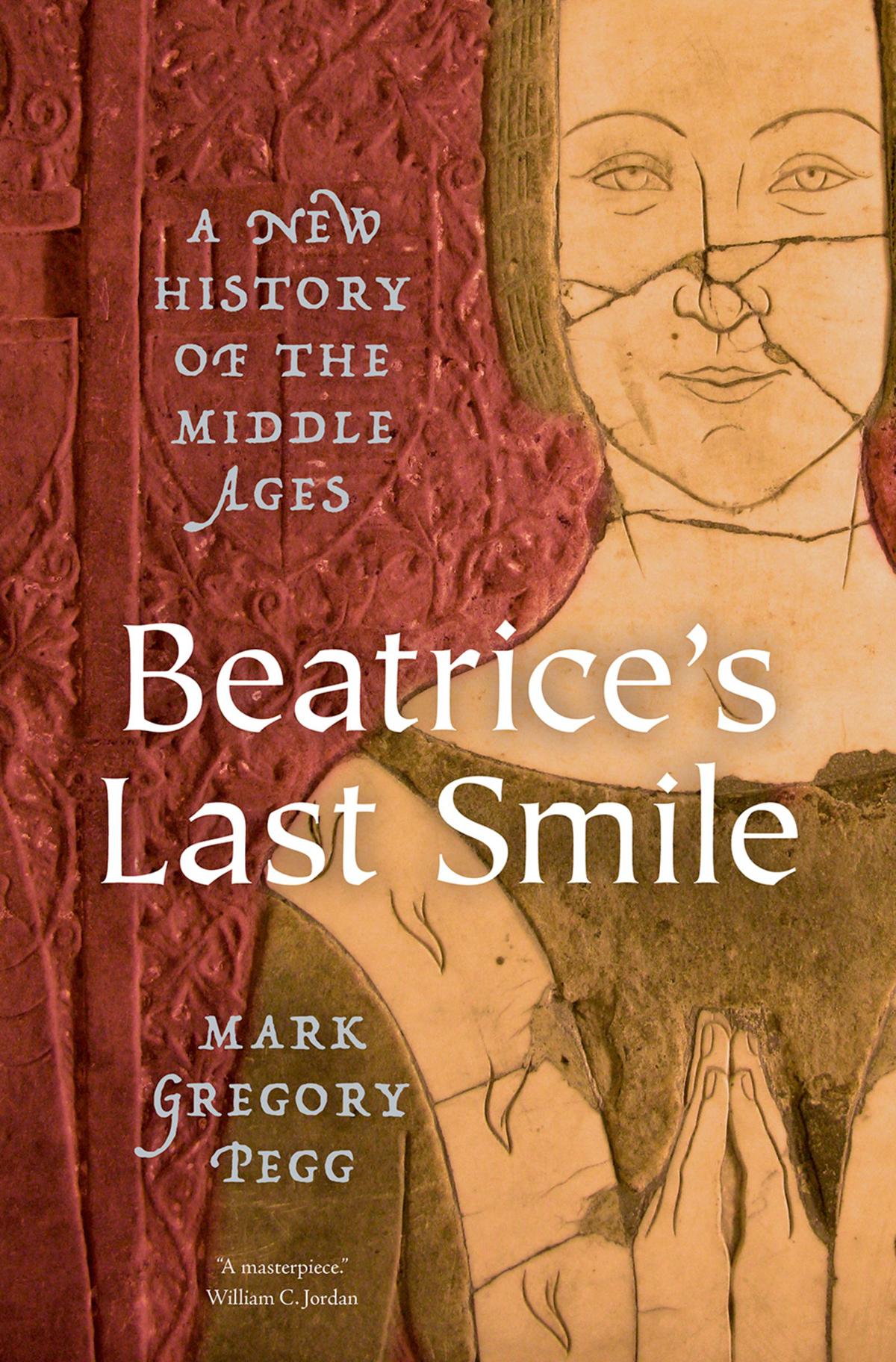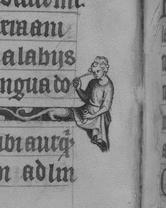ToMargaret,Veronica,andEva
Preface
ListofMaps
What God? 203–337
Swan Songs 337–476
The Flutter of Blackbirds 440–613
Mad Poets 597–735
An Everlasting Star 722–824
The Harrying of the Heathen 825–972
Hermits in Mail 972–1099
Uncle, What Troubles You? 1099–1220
Love Moves the Sun and All the Other Stars
X 1209–1321
Only Death Wakes Us from Dreaming 1321–1431
Acknowledgments
Notes
SelectBibliography
Index
Preface
Cosioraietquella silontana comeparea sorrise et riguardommi poisitorno a lecterna fontana
That was my prayer to her. And she, who seemed so far off, smiled and though she looked at me awhile, she turned once more to the Eternal Fountain.
—Dante Alighieri, Paradiso, Commedia, Canto XXXI
After climbing down through the circles of hell, then ascending the mountain of purgatory, Dante the Pilgrim stands alone at the summit (which is the Garden of Eden). Virgil, his guide until then, has left. Beatrice, a young woman whom he once loved, appears to take him to paradise. She shames him by saying that after her early death he quickly forgot her. He confesses his guilt. Then Beatrice lifts her veil. No longer stern and forbidding, she is smiling. He is transformed. They fly off together through the stars, soaring through one heavenly sphere after another until reaching
the final sphere encircling all the others. During their flight Beatrice becomes more and more beautiful, but stops smiling. Dante wonders why. She answers that as they approach the Eternal Fountain her smile would incinerate him with its divinity. He shuts his eyes.
As soon as they are in the presence of Christ and the Virgin Mary, Beatrice tells Dante to look at her face, as he can now survive her smile. He feels as if the whole cosmos is smiling. The white rose of paradise, whose petals are the souls of the just, surrounds him like a vast Roman amphitheater. Suddenly he realizes Beatrice is gone. He looks up and sees her in the rose’s distant third tier. She smiles at him one final time before turning away. Yet, far from being sad, Dante (Pilgrim and poet, his fictional and real selves merging) is joyful—he finally understands love, himself, and the universe, indeed all existence that ever was and ever will be. Because of Beatrice’s last smile.
All this occurs at the end of Dante’s early fourteenth-century Comedy. Jorge Luis Borges thought Beatrice’s last smile the most moving image ever achieved in Western literature.1 For me it encapsulates the history of the Middle Ages because it evokes the ebb and flow of holiness and humanity in the living of a life, whether on earth or in heaven (or in hell or in purgatory), that shaped the medieval world.
This book follows these fluctuations between the divine and the human through an interweaving of stories about men, women, and children living and dying between the third and the fifteenth centuries. It opens and closes with the martyrdom of two young women: a twenty-two-year-old mother in Carthage in 203, Vibia Perpetua, and a nineteen-year-old girl in Rouen in 1431, Jeanne la Pucelle (or Jeanne d’Arc). Their deaths, while horrible and heartrending, nevertheless shine with the density of life. But these lives were in the past, and whatever we may wish—and such wishes are worthy—there is nothing at all similar between us and them. The past has never been another country; it has always been another universe. Yet trying to evoke lives long gone, such as Perpetua’s and
Jeanne’s, and maybe capturing some part of their incandescent reality, is what is so wonderful about being a historian.
Historical thinking is a profound gift. It is the foundation of all knowledge, humanistic and scientific. And so if the ten chapters of this book do nothing else, I trust they will give the reader an appreciation of change over time, of seeing that nothing is written in stone, that nothing is inherent, obvious, or natural. This might sound like cynicism. Far from it. Rather, it is a reminder that we must think hard about the whys and wherefores of the past (and of the present) and that we must always be ready to defend ideas and behavior we take for granted because societies really do forget as easily as they remember.
This book is not a religious history, despite my emphasis on holiness as a connective thread throughout the Middle Ages. Or to be more precise, this is not a history written by a religious person who assumes that religion in and of itself has some meaning outside of time and space. The great seductive achievement of religion is the denial of history. Religion was and is a way of understanding the world, and so any explanation of it in the past or the present must take into account the specific world that gives a religion meaning at a particular time and place. Religion is merely one manifestation of holiness. To argue over the holy is to argue over the very nature of what it means to be human, from the most mundane daily activity to the most sublime act of the imagination. It is to argue over how politics, economics, art, philosophy, and literature are realized in a society.
Although not a religious history, this book can be read as a history of medieval Christianity, for that is inescapable in any history of the Middle Ages. Nevertheless, there is a long and learned historiographic tradition in medieval history, especially in America, that assumes that anything defined as religion—which usually means “I know it when I see it”—can never be studied objectively and so the sensible thing is to ignore it. I was trained in this tradition and admire it.
This book is not a history of medieval Europe. Of course, I am well aware of the geographical region where much of my narrative
occurs. Yet I have never thought of myself as a historian of Europe. (Perhaps this is because I am Australian.) Either way, no man, woman, or child before the fifteenth century would have recognized themselves as “European.” Jeanne la Pucelle did—which is one of the reasons the book concludes with her.
Having said what the book is not, I should say what it is: a history of the “West.” That term is a convenient shorthand for the lands and peoples that constituted the Western Roman Empire before and after its fall. But even in these centuries the West means more than just what was the Respublica—including, for instance, Irish monks freezing in the Inner Hebrides or the Prophet Muhammad in the Arabian peninsula receiving messages from the Highest God. By 700, though, the term usefully designates the developing religious and social distinctiveness of the regions between the Mediterranean and the North Sea that were not part of the East Roman (or Byzantine) Empire or Muslim Islamicate (or Islamdom). This difference only became more accentuated during the later centuries.
Indeed, what is commonly assumed to be the defining characteristics of Western civilization, especially a particular sense of the self, were formed in the twelfth and thirteenth centuries of Latin Christendom. To talk of the “West” should not be to engage in any form of cultural triumphalism. History is not a metaphysical discipline; it is an epistemological one. It is not about how the world could have been or could be; it is about what can be known of the actual world, as it is and was. I believe in historical truth, even if that truth is always beyond my reach, even if it can never be grasped. Searching for it must be enough.
“The old dictum is always true,” the great French medieval historian Marc Bloch observed almost a hundred years ago, “years of analysis for a day of synthesis.”2 A famous aphorism, less often quoted with what he went on to say: a good historian knows that their specific analytic research is always shaped and guided by the grand narrative syntheses written by other historians. When this selfawareness is lacking, it is all too easy to repeat hypotheses,
historiographies, and narratives that are either shopworn, misguided, or just wrong.
What was crucial for Bloch was that historians need syntheses, whether we like it or not, as they are the inescapable background music to our research and writing, and whether we wrote them or not, grand narratives are what we should always be imagining we would go on to write. In an ever-expanding universe of unwritten books, the curse of all scholars, our own unwritten sweeping syntheses actually matter, as they are constantly shaping the analytic research we do publish.
Moreover, big narrative histories for Bloch are exercises in collective public knowledge, helping form the ideas of all readers about the past. Such histories help societies define what was and is truth.
This book is the background music that I have been privately listening to for more than twenty years about the Middle Ages. Attentive readers will easily pick up melodies and themes from others. This is the unwritten book that has shaped so much of my life, finally written down.
Christmas Day, 2022 Wamberal
New South Wales Australia
ListofMaps
The Early Middle Ages (or Late Antiquity), 200–700
Italy in the Early Middle Ages
Britain and Ireland in the Early Middle Ages
The Roman Empire of Charles the Great (Charlemagne), 814
The Scandinavian Lands of the Northmen (or Vikings)
The Medieval West, 1000
The Medieval West, 1200
The Mongol Empire around 1250
Europe, 1500
God?
1 A Hairpin for Disheveled Hair
In early March 203, Vibia Perpetua, a twenty-two-year-old noble Roman mother, was arrested in Thuburbo Minus—a small town on the North African coast—for being Christian, along with three men and a pregnant slave girl named Felicity. She and the other Christians were imprisoned in Carthage. Her dungeon was dark, crowded, and stiflingly hot. “Above all,” she wrote in a journal later smuggled out, “I was tormented by anxiety for my baby.” For a price, Perpetua was moved to another cell to nurse her newborn son. “Prison suddenly became a palace, so that I didn’t want to be anywhere else.”


Perpetua asked God for a vision about her future, whether “martyrdom or freedom.” He replied that evening with a dream in which she climbed a great bronze ladder to a garden in the sky and, surrounded by thousands of people clothed in white, an old shepherd gave her a mouthful of cheese. She awoke, “still chewing on something sweet,” with martyrdom as her answer. Soon after, the procurator Hilarianus sentenced the Christians from Thuburbo Minus to fight wild animals in the amphitheater of Carthage.
Perpetua’s dead little brother then visited her in two other dreams. In the first, “coming out of a place of shadows,” he was thirsty and filthy, and his face was disfigured with the weeping sores that had killed him. In the second, he playfully drank from a low basin in spotless clothing with only a small scar on his face. His sister knew that he had been “released from his toils.” A day before the games Perpetua dreamed she was a naked young man, glistening in olive oil like an athlete, stomping on the head of an Egyptian gladiator. “I knew that I was going to be fighting not with animals but with Satan! I knew victory was mine!”
A week after her arrest, Perpetua was led to the amphitheater. She greeted the other Christians from Thuburbo Minus, discovering that Felicity had given birth to a daughter three days earlier. (The babies of both women were taken away and raised by their families.) Before entering the arena, the men were costumed as priests of Saturn and the women as priestesses of Ceres. Perpetua—“noble to the end,” according to one witness—refused to wear such regalia. “The point of deliberately going this far was not to have our freedom taken away; the point of taking our lives was to avoid doing this kind of thing,” she told the tribune choreographing the games. “That was our pact with you.” The tribune agreed—instead of religious fancy dress, he stripped Perpetua and Felicity and draped fishing nets over their naked bodies.
Perpetua entered the amphitheater singing, indifferent to her nakedness, already victorious over Satan, “already stepping on the Egyptian’s head.” Her reverie was cut short when the Christian men started yelling threats at the spectators (as many as thirty thousand) in the stands. “What you do to us,” they even shouted at Hilarianus,
“God will do to you!” The crowd cried out for venatores (gladiators who fought wild animals) to whip them. After being scourged, the Christian men were mauled by leopards, wild pigs, and bears. (One slow-witted venatorwas himself torn apart by a swift boar.)
Perpetua and Felicity, in another part of the arena, waited for a wild cow to gore them. The tribune was mocking them as new mothers with this specially chosen beast. The crowd, suddenly aware that the condemned had recently given birth, shuddered and screamed at the sight of exposed maternal flesh, especially Felicity’s postpartum “dripping breasts.” (Only a few moments earlier these same spectators had cheered, “Had a great bath! Had a great bath!” as blood spurted from one of the Christian men when a leopard ripped him open.) Stagehands quickly wrapped the women in loose robes. After this brief interruption, the show resumed. Perpetua, when first hurled by the cow, nonchalantly requested a hairpin for her disheveled hair, “so that no one might think she grieved in her glory.” Finally, the bloody and mutilated women were ritually murdered by gladiators with swords.
Perpetua, initially stabbed in the collarbone by her nervous and inept executioner, steadied his hand and, already living in her garden in the sky, joyfully, wantonly, embraced death as she helped him slice her throat.1
2 An Empty Pageant
“In the life of a man,” observed the Roman emperor Marcus Aurelius around 175, three decades before Vibia Perpetua’s death, “his time is but a moment, his being an incessant flux, his senses a dim rushlight, his body a prey for worms, his soul an unquiet eddy, his fortune dark, and his fame doubtful.”2
When Marcus Aurelius wrote these quick-fire exhortations to himself—less end-of-day meditations than sleepless inner tirades—he was in his late forties ruling over an empire that was 2,500 miles from east to west and 2,300 miles from north to south, with a population of 50 to 60 million, that is, somewhere between a fifth
and a sixth of the world’s population.3 Of that number, 5 million (perhaps as many as 9 million) men, women, and children were slaves, and somewhere around 250,000 individuals were born into slavery each year.4 The Roman imperium extended from the North Sea to the Mediterranean, from the Danube River to the Euphrates, and from the Black Sea to the Upper Nile, embracing three continents and what are now roughly sixty modern nation-states. The population of Rome was close to 1 million, with Alexandria and Antioch each approaching 300,000, and many ancient Hellenistic poleis in Asia Minor exceeding 100,000. Most cities, especially in the western provinces, such as London or Cologne, had populations of no more than 20,000. Carthage (in what is now northern Tunisia) was the largest city in Roman Africa, with over 100,000 residents, capital of the wealthy grain-growing province of Proconsularis (or Zeugitania).5
Marcus Aurelius described (in the vivid if moody vocabulary his Stoic philosophy reveled in) the teeming humanity within his empire as “an empty pageant, a stage play,” no more than “flocks of sheep, herds of cattle; a tussle of spearmen; a bone flung amongst a pack of curs; a crumb tossed in a fishpond; ants, loaded and laboring; mice, scared and scampering; puppets, jerking on their strings.”6
Marcus Aurelius epitomized Romanitas blended with paideia, that is, the martial vigor of “Romanness” constrained by the poise of the Hellenistic philosopher. He was acutely aware that existence was transient—“like warfare, a brief sojourn in an alien land”—and yet for all his cosmic fatalism, he would never think of chasing death.7 A wise man might commit suicide, but chasing after death for no other reason than an inability to compromise, as he felt was the case with Christians, was offensive “stage heroics.”8 There was no garden in the sky awaiting him when he died, only oblivion. Philosophy and the manners of the philosopher were his warm existential comforts. He sought well-being by accommodating himself to the jangling way of the world, by performing correctly and seriously in the puppet show of life. Philosophers were experts in the art of living, practicing a rhetoric of mind and body whose affectations, apart from being a
language understood by all Roman elites, helped individuals transcend the “dim rushlight” of routine reality for transcendent ethical clarity.
Such studious composure meant that any person of paideia should be able to stand unmoved when threatened with death.9 Perpetua, while consciously emulating such self-possession—she was, after all, “noble to the end”—embraced her execution with almost sensual pleasure. Life was ephemeral for her too, but she wanted to die as a joyous martyr and “bride of Christ.” Unlike emperors or millions of other Romans worshipping the old gods or even most other Christians throughout the empire, Perpetua knew without a doubt that death was merely a journey (specifically a climb) to everlasting divinity with her high-dwelling God.
3 Sacred Threads
The dreadful knowledge that to die was to lose whatever divinity a person had in life, and that living without death was the prerogative of the immortal gods, underscored the religious attitudes and habits of the civilizations around the Mediterranean Sea for more than a thousand years.
The act of worshipping the gods was, in no small part, an exercise in envy. Individuals felt no need to imitate the Homeric gods, whose excitable, savage, and unpredictable behavior was no model for living day to day. “Strangely violent is the grace of gods who sit enthroned in holiness,” warned the Greek playwright Aeschylus in the middle of the fifth century BC.10 As a bulwark against the cosmic capriciousness of the gods, human worship was consistent, predictable, and intensely local. This communal and familial worshipfulness, where every sacrifice, prayer, swirl of incense, or knee-bend before a statue was specific to each town and household in the Roman Empire, celebrated custom, continuity, and tradition. Such wonderfully varied and parochial rituals, whose scrupulous performance was frequently more important than the god
so honored, evoked the experience of timelessness and immortality denied the individual.11
Romans thought of the world and their lives as intersected by an infinite number of holy powers. Poets and priests called them numina, while a specific sacred thread (speck, segment, particle) or a singular numinous bundle (suffusing a person or thing) was a numen. The gods were embodiments of these powers, greater or lesser swaths of divinity woven into anthropomorphic form. Everything and anything—door hinges, cooking pots, cloudy skies, weeping sores, magnificent temples—was infused with these prodigious forces. Holiness was forever keeping step with Romans, dogging them, getting under their feet, either wrapping them in lustrous sheaths or leaving them exposed to misfortune. Emperors were cocooned in the sacred stuff.
The proper and correct function of religio was the public and pious orchestration of these holy powers through traditional rites. Piety involved choreographing holiness through ritual so as to bring about good fortune. Tragedy existed, and with it all the large and small cruelties and sorrows that tear lives apart, but a morally specific notion of evil—tangible and quantifiable—did not. Religion was not about abstract morality—that was for philosophy and philosophers—but about maintaining the established rhythms and conventions of holiness through respect, ritual, and repetition. “The very power of numina stirs our hearts,” observed the Roman poet Ovid at the beginning of the first century, before adding, “And there is nothing disgraceful in yielding to such credulity.”12
Romans found it easy to absorb other gods and cults into a universe splintered by holiness. A cosmos so fragmented required (and therefore was always producing) a diversity of gods, beliefs, and practices. A universal set of religious habits and routines was unimaginable to a follower of the old gods. A traveler to a city or shrine might understand the local religion, even participate in a ceremony, but he or she knew that the specific holy powers of one place were not transferable to another. Of course, the cult of the emperor possessed similar attributes throughout the empire, with all
Romans honoring his divinity, although even these rites varied when woven into local ritual calendars.
Radical Christians rejected this worship of the emperor. Two decades before Vibia Perpetua’s martyrdom, twelve Christians (seven men, five women) in Carthage were rebuked for impiety by the proconsul Vigellius Saturninus when they refused to pray for Marcus Aurelius. “We too are a religious people, and our religion is a simple one,” he informed them. “We swear by the genius of our lord the emperor and we offer prayers for his health—as you should too!”13 The proconsul put the sacrilegious Christians to death. Perpetua belonged to a radical prophetic sect as well—overly zealous and hence impious even to other Christians—that was consciously disrespectful to the emperor and the public rituals maintaining the right and proper flow of holiness in the world.
4 The Hidden Mystery
In the city of Edessa around 215, a decade after Vibia Perpetua’s death, the Christian nobleman and philosopher Bardaisan observed in conversation with friends (at least in a Platonic dialogue written by his student Philippus) that as regards Christians, “wherever they may find themselves, the local laws cannot force them to give up the law of the Messiah.”14 Everyone else was trapped by custom, as “the laws of men are stronger than Fate,” and so, whether they wished it or not, Persian men married their daughters and sisters, Parthian men were polygamous, mobs of British men shared one wife, all Hindus were burned in death, no Edessene was chaste, the Greeks never stopped doing gymnastics, and the Romans were “always conquering new lands.”15 Edessa was then the capital of the kingdom of Osrhoene, on the Balih River (a branch of the Euphrates), a fertile Syriac-speaking corridor in Upper Mesopotamia between the Roman Empire and the Arsacid Parthian kingdom.
Bardaisan was not talking about Christians like Perpetua, who, despite denying local laws, was still so ensnared by custom that she chose to die like a noble Roman. His Christianity was a religion of the
great caravan routes across Eurasia, a way of living untouched by the specificity of place, the vicious whims of princelings, or the mundane necessities of survival; and which, having no need for physical or ecclesiastical structures, or even visions of an afterlife, was imbued with a Platonic lightness of being, escaping the clutches of the world. It was a Christianity of Hellenistic philosophers and Eastern wanderers, neither welcoming death nor embracing violence, and so temperamentally closer to Stoic emperors than Carthaginian martyrs. It was a “universal” religion, in that Christians were to be found from the North Sea to the Asian steppes. On this point, Perpetua and other Roman Christians in the third century would have agreed with Bardaisan. None of them, however, assumed that the universe was exclusively Christian or even should be.
Bardaisan died around 222, two years before the last Arsacid Parthian king, Artabanos IV, was killed by the Sasanian Persian king Ardasir I at the Battle of Hormozgan on the Persian Gulf.16 Although the Arsacids sometimes claimed they were the heirs of the Persian Achaemenids, defending themselves against one Roman emperor after another who imagined he was Alexander the Great, Ardasir I boasted that his new Sasanian Empire would, according to the Roman historian Dio Cassius, “win back everything that the ancient Persians had once held as far as the Grecian Sea.”17 Roman Syria and Mesopotamia (as well as provisional kingdoms like Osrhoene) were “his rightful inheritance from his forefathers,” stolen after the death of the last Achaemenid king of kings, Darius Codomannus III, five hundred years earlier in 330 BC.18 Ardasir I and his son, Sapur I, while never quite conquering Roman Asia Minor, did expand the old Parthian realm into a formidable empire whose ambitions and identity were defined in opposition to Rome. For the next four hundred years the Roman and Sasanian Empires repeatedly clashed, incinerating cities and enslaving populations, until the latter was destroyed during the great “Muslim” holy wars of the seventh century.
Amidst this Persian reformation, a twenty-four-year-old named Mani, whose mother was perhaps a royal Arsacid, received a divine revelation after wandering the Iranian plateau and the Hindu Kush in search of it. In 240, the same year Ardasir I died, either the Syzygos (his unsleeping divine twin or “pair-comrade,” who never left his side) or the Paraclete (“comforter” or “Spirit of Truth,” also his divine twin, forever whispering to him in Syriac about Jesus) “unveiled to me the hidden mystery, the one that is hidden from worlds and the generations . . . the mystery of light and darkness, the mystery of the calamity of conflict and war.”19 Mani was impelled to explain these mysteries in a new religion that would be explicitly universal. “The Lord Zoroaster came to Persia. . . . The Lord Buddha, the wise, the blessed one, came to the land of India. . . . Jesus the Christ, in the western lands of the Romans, came to the West,” and now Mani, superseding all of them, was a prophet to all these lands.20 A pure “elect” living in “blessed poverty” recited his enlightenment, which was collected in codices, to aspiring “hearers.”21
The core of this knowledge was a dualist vision of the cosmos that we call Manichaeism. Unlike the dualism of Zoroastrianism, which celebrated the tension between light and darkness, existence and nonexistence, in a world made by the wise god Ahura Mazda, and where the flickering flame (light, dark, light, dark . . .) was its symbol, Manichaeism loathed dark matter as an entrapment of the bright spirit. Bardaisan’s Christian Platonism possessed similarities to Mani’s mystery of light and dark. (In the early fourth century the Syrian Christian theologian Ephrem insulted Bardaisan’s memory by calling him a “teacher of Mani.”)22 Manichaeism swiftly spread throughout the Sasanian, Roman, and even Chinese empires. As far as Mani was concerned, the universe belonged exclusively to his followers, for only they could escape the crushing weight of earthly darkness for effervescent spiritual light.
As the third century progressed, Roman emperors increasingly saw the universe as belonging only to them and their gods too, and so while the numina were still without limit, pernicious threads like
Manichaeans or Christians were now systematically picked out and destroyed.
5 Not All Emperors Were Blunderers
The emperor Caracalla modeled himself on Alexander the Great and, apart from hoping to conquer Asia with the same blazing sense of destiny, piously granted, in a grand gesture worthy of the Macedonian monarch and “as an honor to the gods,” Roman citizenship to all or almost all the free inhabitants of the empire in 212 or early 213. This innovation, far from being the obvious outcome of previous imperial enfranchisements, was unexpected and seemingly popular, if the number of new citizens who adopted Caracalla’s official name, Aurelius, is anything to go by.23 Although Caracalla’s Alexandrine dreams collapsed two years later when his expedition against Parthia failed miserably, prompting his bodyguard to murder him (as he relieved himself by the roadside) near Edessa in 217, his radical vision of Rome was a demonstration of imperial confidence. The empire needed reforming, and while his father, Emperor Septimius Severus, retrospectively had his family adopted by the great Marcus Aurelius (hence Caracalla’s official name), he recognized that the “classical” empire of his adoptive ancestor was fracturing and that, unless something dramatic was done, it might collapse altogether.24
Less than two decades later—after the murder of two mediocre emperors, Macrinus and the teenage Elagabalus, whose frenzy at making the Syrian god Elagabal the supreme deity throughout the empire was a harbinger of further imperial religious experiments— the empire did fall apart. After the emperor Alexander Severus was brutally killed (along with his mother) by soldiers at Mainz in 235, the empire barely survived a half century of calamity and crisis, including no fewer than twenty-two emperors, almost all of whom died violent deaths, until the ascension of the emperor Diocletian in 284.
In many ways it seems more surprising—although perhaps not to Caracalla—that these decades of imperial crisis were so late in coming. The Roman Empire, far from being a tightly centralized state, was a loose-limbed entity, a mighty regional federation governed by local urban elites, whose close and immediate authority was sanctioned by the distant and awesome power of the emperor. The empire was a galaxy of thousands upon thousands of cities and towns, major and minor stars all glistening with civic works (baths, statues, temples, fora, amphitheaters) and honorable town councils, all emulating in their own way the great sun of Rome. In central Italy, Sicily, southern Spain, and northeastern Africa (125 miles inland from Carthage to the barren hinterland), cities were no more than ten miles apart, which was a half a day’s journey on foot, slightly longer with a loaded donkey.25 Such urban density was commonplace throughout most of the Roman East, including Egypt and Syria, lessening near the Arabian peninsula and the borderlands with Sasanian Persia. In northern Italy and parts of the south, the Dalmatian coast, Mediterranean Gaul, northern Spain, and a sixtymile-wide littoral strip along the northwest African coast, cities were around twenty-five miles apart.
Outside this bright constellation—less Plato’s sullen frogs squatting around the Mediterranean pond than ebullient fireflies— cities were few and far between, particularly in northern Gaul, Britain, and the Danubian riverine frontier.26 Local urban elites, around sixty-five thousand in the Roman West and almost three times as many in the East by the early third century, were, as town councilors or curiales, responsible for religious festivals, maintaining law and order, and, most crucially, collecting imperial taxes, which were low for so vast an empire—somewhere between 5 and 10 percent of the agrarian surplus.27 This pliant system, where an elite few maintained the imperium over millions, stopped working in the third century when the empire was threatened by external enemies, civil wars, economic disintegration, and a chorus line of inept emperors.
Throughout the empire, urban rhythms, from worshipping the old gods to gathering taxes, were largely local anticipations of and responses to harvest time, when prosperity was hopefully guaranteed for another year. Almost all wealth in the empire, more than 60 percent, derived from agriculture. More than 80 percent of the population, free or slave, were engaged in the labor of farming or animal husbandry. The suspense and satisfaction accompanying the harvest lasted from early spring to late summer for grain, late autumn to early winter for grapes and olives. Hailstorms and tempests, whose probability cruelly coincided with the Mediterranean harvest, could lacerate and flatten wheat, olives, or vines in a matter of minutes. Extended droughts caused famines. Variations in temperature could reduce yields by half. Olive trees, which take eighteen years or even more to mature, wither and die after a severe night frost.
In the third century, the flood of the Nile between June and September was consistently disappointing—fewer fields were covered with rich mud, with only a sterile slurry washing the majority, leading to wretched or failed harvests. The yearly cereal shipments to Rome were less bountiful.28 Around 300 an Egyptian schoolboy copied on a wax tablet a poem to the “divine Nile” in Greek, which, more than anything, was a song about the widespread worry every summer awaiting the flood:
Children singing all together the annual hymn in prayer inviting you to manifest yourself most perfect, for through hopes of you the life of mortals is sweeter . . . When you are rising, blessed one, our fatherland has glory.29
All of this anxiety about crops was only amplified by the damage from rampaging legions and brigands. Since all wealth for the next thirteen centuries was overwhelmingly tied to the land, who owned it, and who worked it, similar fears and worries lasted until the end of the Middle Ages.
Not all third-century emperors were blunderers; quite a few never reigned long enough to do much, and a handful were just
catastrophically unlucky. All of them understood that the empire was in crisis, often trying extraordinary remedies. Almost immediately upon coming to the throne in 249, the emperor Trajan Decius issued a formal edict to all citizens of the empire (apart from Jews) demanding they sacrifice to “all the gods,” eat the meat of the “sacred victims,” and swear that they had always sacrificed.30 Local curiales were to witness these sacrifices and issue certificates of their performance. Anyone refusing to sacrifice would be punished, from exile to loss of property to torture and death. What was so unusual about the edict was that it made what had once been public and parochial now individual and universal. Sacrifices were normally great sacred barbecues before large audiences in cities and towns, where the rising smoke, the smell of burning flesh and gristle, and mouthfuls of cooked meat engulfed humans and gods in shared fumes, aromas, and palates. They followed regional calendars, they celebrated the specificity of place, and they confirmed the prestige of local elites as patrons of religiones.
The mandate of Decius, while not disavowing such civic or cult festivals, demanded individual sacrifices and the pouring of libations in the same way as taxes were individually exacted—each one involved certification by curiales, each one guaranteed the security of the empire. It was a blunt acknowledgment that public works, whether communal sacrifices, baths, or temples, were disappearing from cities. Wealthy elites, especially in the West, preferred spending money on walls and fortifications. (Rome itself was ringed with walls in the 270s.) Decius was trying to unify a fractious and fearful empire. Christians, while not specifically the target of the edict, suffered the most if they refused to sacrifice to the gods. For the first time they were punished systematically throughout the empire; nevertheless, perhaps surprisingly, there was no widespread or official animosity against them, as there would be under Diocletian.31 Whatever Decius hoped his edict would accomplish was cut short when it lapsed after he died fighting against invading Goths in Moesia Inferior (northern Bulgaria) in 251. As much as
Caracalla’s general enfranchisement had signaled the end of the classical empire, the edict of Decius confirmed its expiration. If further confirmation were needed that this was no longer the empire of Trajan or Marcus Aurelius, the emperor Valerian was crushed in battle by Sapur I outside Edessa and taken prisoner in 260. “I, the Mazda-worshipping ‘god’ Sapur, king of kings of Iran and non-Iran,” proclaimed the trilingual (Middle Persian, Parthian, Greek) inscription on the Ka’Ba-i Zarduct (Cube of Zarathustra) in Naqs-i Rustam near Persepolis by the river Pulvar, “captured the emperor Valerian with our own hands and . . . the praetorian prefect and senators and officials . . . and we made them all prisoners and deported them to Persis.”32 These words were carved soon after the death of Sapur I in 272 on the massive ruins of a Zoroastrian fire temple built by the Achaemenid Darius the Great eight centuries earlier and destroyed when Alexander the Great incinerated Persepolis in 330 BC.33 They testified to Sasanian glory and Roman disaster, commemorating the destruction of a large Roman army (“a force of 70,000 men”), the desolation of Syria, and the ransacking of Antioch for a second time. They framed the conflict between the empires as a holy war. There was no mention of what happened to Valerian in captivity. There were Roman rumors that he died an old man somewhere in Persia after years of humiliation, even being dishonored in death with his skin flayed, dyed red, and displayed in a Zoroastrian sanctuary.34 Despite military catastrophes and the empire breaking apart into autonomous entities under self-proclaimed rulers such as Odaenathus, lord of Palmyra in Syria, some Roman regions, if not quite thriving, were on a day-to-day level largely untouched by imperial turmoil. Egypt was such a province, and it was here, a decade after Valerian’s capture and seven years before Mani’s death, that an unhappy Christian youth had a revelation and went to live amongst the dead and the demonic.
6 The Lonely One
Antony, a prosperous farmer of the Fayum in the Nile delta of northern Egypt, walked into his village church sometime around 270 and heard someone repeat the words of Jesus to the rich man: “If you would be perfect, go and sell everything you possess and give it to the poor and come, follow me, and you will have treasure in heaven.” This was divine advice for the despondent adolescent (he was not yet twenty), who, ever since his parents had died six months earlier, felt overwhelmed by possessions and responsibility for his little sister. Immediately, he divided his farm (two hundred acres) amongst his neighbors, sold everything he owned (including at least two slaves), gave his profit to the poor, and entrusted his sister to faithful Christian virgins after setting aside income for her. He then walked to the edge of his village, where he lived and prayed upon a rush mat. He stopped oiling and perfuming his body like other young Egyptian men. He only ate bread and salt once a day, then every two, then every four. Antony replaced all memories of his family with the words of Christ (or at least those he recalled, as his memory was his only book).
The devil took an interest in Antony and started chatting with him at night. They talked about sisters, delicious food, money, good weather, the pleasure of laziness, and the difficulty of virtue. One offered temptations, while the other numbed himself with prayers. The devil, giving up his bon vivant persona, metamorphosed into a beautiful girl and, through tender caresses, aroused the young loner. Antony, disgusted by his bodily desire, fought off the wicked slut by thinking of agonizing fire and ravenous worms. After this, so as to smother his living flesh, he went to the desolate area just beyond the village where the dead were buried, locking himself inside an ancient tomb. The devil chased after Antony and, with a gang of thuggish demons, smashed in the door and beat him senseless.
“Look, here I am,” Antony taunted the devil when he regained consciousness, even as he lay splayed out in rippling pain. “I do not run away from your fights!” The devil was amazed and furious that
neither lust nor injury deterred the youth from living amongst the dead. “Take up your weapons,” he commanded his demons, “we must attack with greater force!” The tomb began to shake violently. Demonic hordes in the form of lions, bulls, wolves, vipers, serpents, scorpions, leopards, and bears poured through holes in the crumbling walls. Roaring and hissing, they attacked their supine prey. “Look, here I am,” Antony mocked the beasts as they mauled and gored him, “devour me!”
Antony endured the feeding frenzy, staring upward, his body in bloody agony, until the roof of the tomb suddenly burst open and a shaft of light swept over him. All his pain disappeared, all the demons vanished. Antony reprimanded the light: “Where were you, good Jesus? Where were you? Why were you not here from the beginning to heal my wounds?” A voice, mildly amused at being scolded, replied, “Antony, I was here, but I was waiting to watch your fight. But now, since you have bravely held your own in this struggle, I will always help you and I will make you famous throughout the world.” Antony rose to his feet, strong and unscathed.
Antony was about thirty-five when Jesus promised to make him famous. Diocletian had been emperor for a year. Yet what was happening in the empire was irrelevant to Antony; indeed, in an effort to escape even further from the realm of the living, he went off to the “mountain” (Greek oros, Coptic toou)—that is, the desolate desert escarpment of the Nile valley.
Antony had been walking no more than a day when he found an abandoned stone fort (more likely Ptolemaic than Roman) with a small spring. None of the physical distances he traveled were great, whether to the tombs separating his village from the desert or now in the desert itself, but in terms of the Egyptian imagination, Christian or not, it was a heroic enterprise, one in which all traces of his humanity were gradually lost—first amongst the dead, and now in the “mountain” where only demons, barbarians, and wild beasts lived.
When Antony first entered the fort “a huge number of snakes fled as if they had been chased out.” He blocked the entrance with

